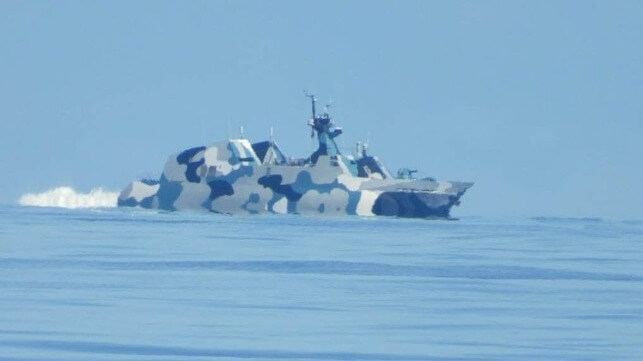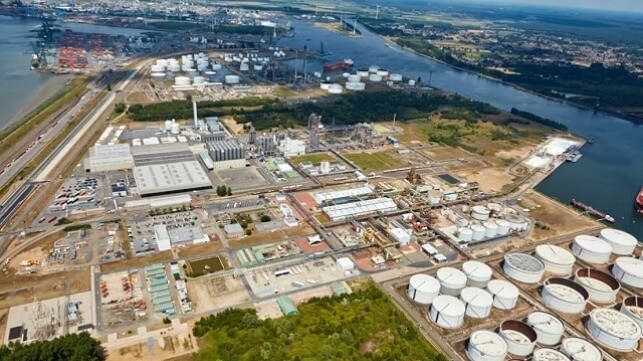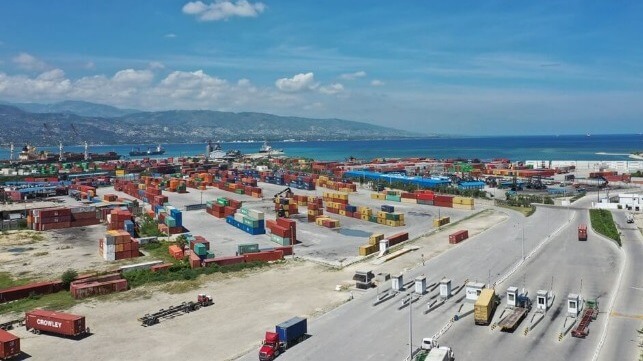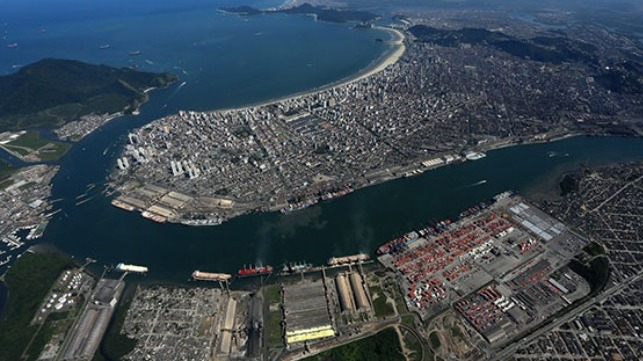Zelenskiy's U.S. Visit Sparks Political Firestorm
- Zelenskiy's visit to a munitions factory in Scranton, Pennsylvania, sparked controversy among Republicans, who viewed it as a partisan campaign event.
- Trump and other Republicans have criticized US aid to Ukraine and suggested that Kyiv should negotiate with Russia.
- The future of US support for Ukraine remains uncertain, with the outcome of the presidential election potentially having a significant impact on the war's trajectory.
In 2020, Ukrainian President Volodymyr Zelenskiy was dragged into the U.S. presidential election campaign. This time, just weeks before a vote that could have a massive influence on Kyiv's defense against the Russian invasion, he walked right into it.
On September 22, Zelenskiy toured a munitions factory in Scranton, Pennsylvania, that makes ammunition for his armed forces, thanking workers and signing one of the 155 mm shells that are crucial for Kyiv's war effort. He was joined by Pennsylvania Governor Josh Shapiro and two members of the House of Representatives, all Democrats.
Had Zelenskiy visited the plant during any of his four previous trips to the United States since Russia launched the full-scale invasion in February 2022, it might have been long forgotten by now.
Instead, it has turned into a flashpoint for Republicans, creating controversy that marred his the nearly weeklong visit to the United States, Ukraine's biggest backer, at a time when Russia is making gains on the battlefield, decimating Ukraine's energy infrastructure as winter approaches, and counting on Western support for Kyiv to wither.
Battleground
Scranton is President Joe Biden's hometown. Pennsylvania is a crucial battleground state whose voters could end up deciding the November 5 election between Republican former President Donald Trump and Democratic Vice President Kamala Harris.
For Zelenskiy, the factory tour was meant "to demonstrate and show…that the assistance to Ukraine is beneficial to the United States itself, because this assistance makes it possible to create new jobs," Alyona Getmanchuk, director of the Ukrainian think tank New Europe Center and a nonresident senior fellow at the U.S.-based Atlantic Council Eurasia Center, told RFE/RL in Kyiv.
Trump, she said, apparently "perceived this as an attempt to…influence the electoral balance, which is very fragile in the state of Pennsylvania. That is, he saw it exclusively in the context of the election."
As Zelenskiy's U.S. trip continued with speeches at the United Nations and meetings with Biden and Harris at the White House, Republicans lashed out over the factory tour. The speaker of the House of Representatives, Mike Johnson, called it "a partisan campaign event" and demanded Zelenskiy "immediately fire" his ambassador to the United States, Oksana Markarova.
Charles Kupchan, an analyst at the New York-based Council on Foreign Relations, said the munitions plant visit "backfired."
"It's more an indication of the polarized debate between Democrats and Republicans than it is about any missteps taken by Zelenskiy," he told RFE/RL.
'Much More Difficult'
Mykola Byelyeskov, an analyst at the Ukrainian government-backed National Institute for Strategic Studies in Kyiv, suggested the U.S. election campaign makes navigating ties with Kyiv's most crucial backer particularly tricky.
"Zelenskiy is doing his best" on the U.S. trip, Byelyeskov told RFE/RL. "We see some results. I'm sure that we'll see more results. And we need to deal with every single faction in U.S. politics. And we are trying to do this. And it's much more difficult during the election season."
For Biden, it's also "very difficult to take radical steps that in his mind might bring the issue of escalation closer. Because all the surveys in the U.S., domestic ones, they say that the American population is indeed concerned with hypothetical nuclear escalation," he said. "That's why it makes it more difficult for Ukraine to argue for various things that we need."
During the visit, Zelenskiy did not secure a public promise that the United States would permit Kyiv to strike deeper into Russia with U.S. long-range missiles.
A group of Republicans in the House held up $61 billion in mostly military aid for Ukraine for six months, leading to a deficit of ammunition on the battlefield, in part on the grounds that the money could be better spent at home. The United States spends the majority of the aid money at home on restocking arms and equipment sent to Ukraine, and the trip to Scranton highlighted that fact.
Johnson had been instrumental in eventually getting the package through; his public ire over the plant visit signaled goodwill over that development is gone.
Kurt Volker, a Pennsylvania native who served as a special envoy to Ukraine under Trump in 2017-2019, called the timing of the factory tour "a huge mistake."
"It is a very sensitive time, a sensitive issue, a sensitive state -- like, the key swing state. It is just playing with fire, and Ukraine should do everything possible to avoid being a political subject in our election," said Volker, who is now an analyst at the Center for European Policy Analysis in Washington.
Way Back When
Lucian Kim, senior Ukraine analyst for the Crisis Group, called the visit a "misstep" on Zelenskiy's part that opened him up for criticism from opponents of aid for Ukraine within the Republican Party faction known as MAGA Republicans for their unyielding support for Trump and his policies.
"Bilateral U.S. support has been one of the foundations of Ukrainian foreign policy," Kim said. "That level of bipartisan support now seems to be in question. The MAGA wing, which is unsympathetic to Ukraine, is increasingly defining the Republican party."
The Pennsylvania plant visit was at last one factor raising doubts about an expected meeting between Zelenskiy and Trump -- whose relationship has been colored for years by a phone call in 2019, just months after the Ukrainian leader's election, that led to Trump's impeachment -- would take place.
Trump was impeached by the then-Democratic-controlled House of Representatives in December 2019 over the phone call in which he was accused of pressuring Zelenskiy to dig up dirt on the Biden family's activities in Ukraine. He was acquitted by the Senate, then controlled by the Republicans, in February 2020.
Trump took aim at Zelenskiy several times. At a campaign stop on September 25, he repeated his description of the Ukrainian president as "the greatest salesman in the world" -- a reference to the tens of billions of dollars in aid lawmakers from both sides of the aisle have approved since the start of Russia's full-scale invasion.
'Proposals For Surrender'
He also repeated his argument that Kyiv should have reached an agreement with Russia to stave off or end the invasion. "Any deal -- the worst deal -- would've been better than what we have now," he asserted. "If they made a bad deal, it would've been much better. They would've given up a little bit and everybody would be living."
Trump has said he would bring an end to Russia's war against Ukraine quickly if he is elected, several times saying it would happen even before the inauguration in January -- a claim he made again when he and Zelenskiy met in New York on September 27. He has not said how he would accomplish this, but his comments have raised concerns his efforts would involve exhorting Ukraine to hand territory to Russia.
On the main purposes of Zelenskiy's U.S. trip was to present Biden and others with a "victory plan" for the war against the Russian invasion, though details have not been released. Trump, in his debate against Harris on September 10, declined to answer directly when asked whether he wants Ukraine to win, saying, "I want the war to stop."
On September 26, Harris said suggestions that Kyiv should cede territory for the sake of peace are "dangerous and unacceptable." Such calls are "proposals for surrender," she said.
A Meeting In New York
In an interview with The New Yorker ahead of his U.S. visit, Zelenskiy said, "Trump doesn't really know how to stop the war even if he might think he knows how." He also said JD Vance, Trump's running mate, is "too radical" and has suggested he wants Ukraine "to give up our territories."
The atmosphere seemed warmer when Zelenskiy and Trump held talks at the Trump Tower in New York, with Trump praising Zelenskiy for his conduct during the impeachment process -- "he was a piece of steel" -- but there was no sign of a change in Trump's attitude toward the Russian invasion.
Trump again offered no details on how he would seek an end to the war, saying he believes that "we're going to get it resolved very quickly" if he wins the presidency. "If we have a win, I think long before January 20…we can work out something that's good for both sides this time," Trump said before the two sat down for the meeting.
"It's a shame but this is a war that should have never happened, and we'll get it solved," Trump said after the meeting. "It is a complicated puzzle.... Too many people dead."
In a Telegram post after what he called a “very meaningful meeting,” Zelenskiy said that he had presented his “victory plan” to Trump and that they “discussed used many details.”
"We have a common view that the war in Ukraine must be stopped. Putin cannot win. The Ukrainians must win," he said.
Whether Zelenskiy's visit will affect the outcome of the U.S. election is an open question.
"Foreign policy issues in general don't determine [U.S.] electoral outcomes. People vote on the economy, on immigration, on crime, what's on their radar screen on a day-to-day basis," Kupchan said.
And exactly how a win for Trump or for Harris might change the course of the war is also unclear.
Kupchan said that despite Trump's rhetoric, he will struggle to cut a deal with Putin if elected and likely end up approving aid for Ukraine.
"Trump would not want to be the American president who lost Ukraine. And so even if he gets elected and tries to negotiate an end game, he too is going to end up having to send support to Ukraine," he said.
By RFE/RL



